The ASH584-2 was manufactured by Leland Electrosystems and could be found in various aircraft from the De Havilland Dash 8 to the Lockheed F-16 and even the Boeing 717. The purpose of a static inverter in an aircraft is to take DC power from the battery or electrical system and convert it to AC power for use by avionics and other systems that require it. A static inverter could be used constantly during normal flight, or may only be used in the event of an engine or generator failure where the normal source of AC power becomes unavailable. This particular static inverter accepts a DC input voltage range of 26-30 VDC. It converts the DC power to AC and outputs two different AC voltages: 115 VAC and 26 VAC, both at 400 Hz. The ASH584-2 static inverter is rated to output a maximum of 300 VA (around 270 watts based on a power factor of 0.9) of electrical power. 400 Hz AC is common in aircraft electrical systems, but not generally seen elsewhere. Synchros in an HSI are an example of a component that may run on 26 VAC 400 Hz. A cooling fan may run on 115 VAC 400 Hz. The primary reason for aircraft electrical systems using 400 Hz AC compared to 50/60 Hz is simpler than you may think. It mostly has to do with weight reduction. Since transformers and electric motors rely on magnetic cores that store energy during each cycle, increasing the frequency (cycles per second), results in less core material needed to achieve the same result and power level. A 400 Hz transformer could be 1/10th the side of a 60 Hz variant. This weight reduction and space savings is crucial for aircraft, but is not much of a concern on the ground. Additionally, due to the design of many aircraft engines, deriving 400 Hz AC power from the generators coupled to the engines is pretty straightforward. MIL-STD-704 goes into great detail on the power design requirements for military aircraft and is worth a look if you want to learn more about why systems are designed this way. Our static inverter was purchased online in unknown condition. Despite being very rusty and dusty inside, it works just fine and produces the typical 400 Hz whine. We are planning to use it as a bench supply to power up avionics that require 400 Hz AC. A pin-out for this static inverter has been provided at the bottom of this page.

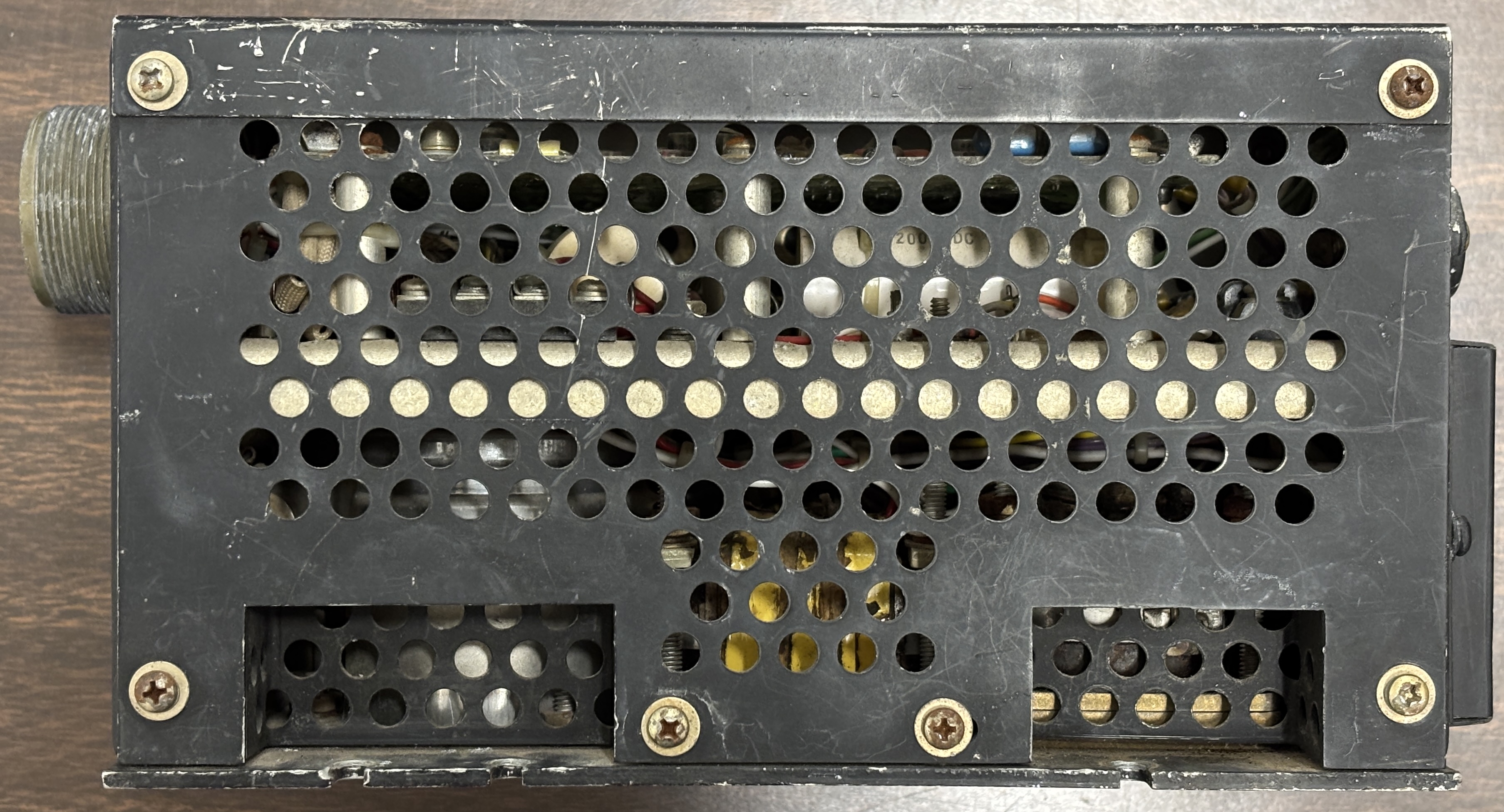
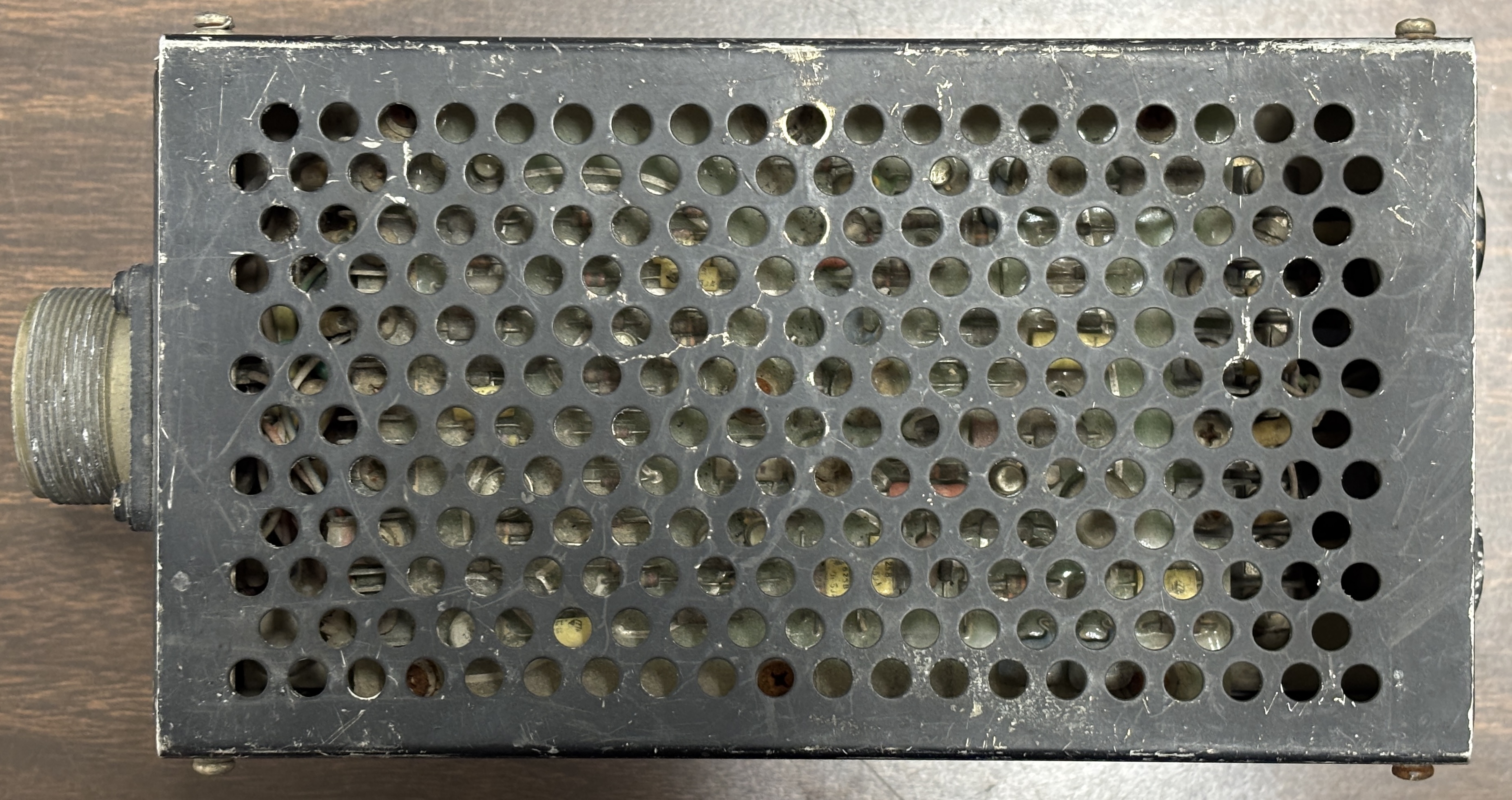
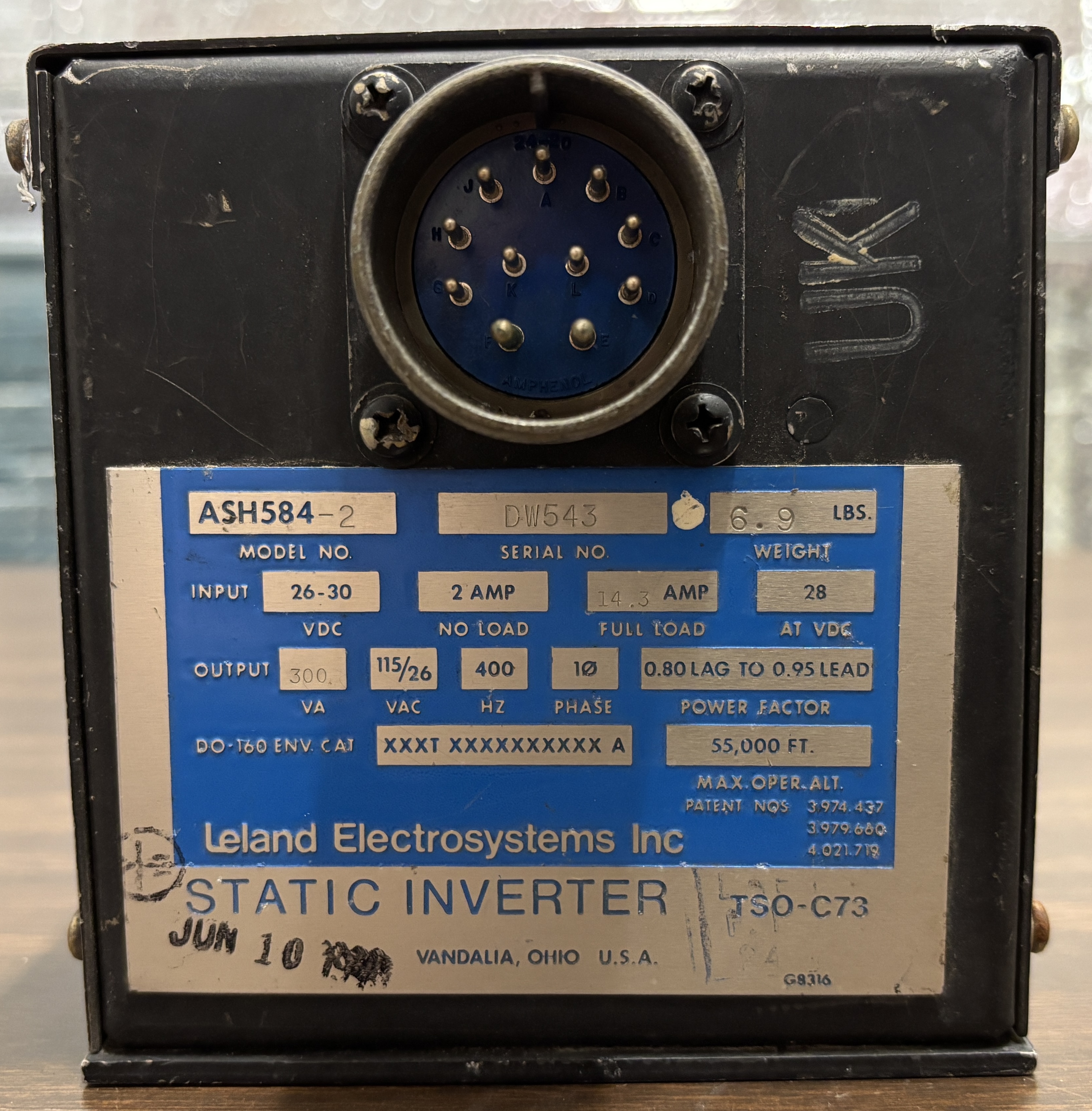


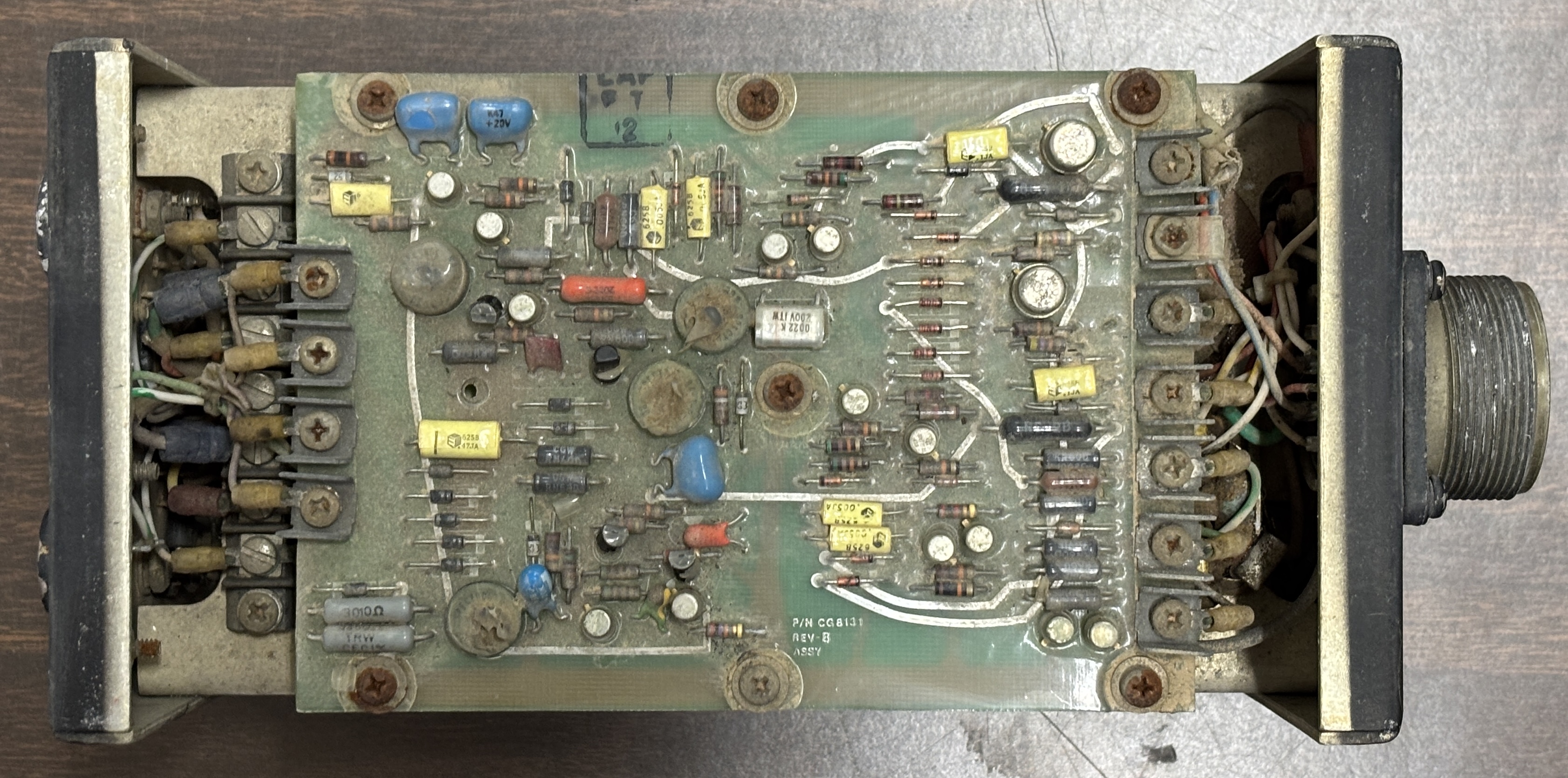
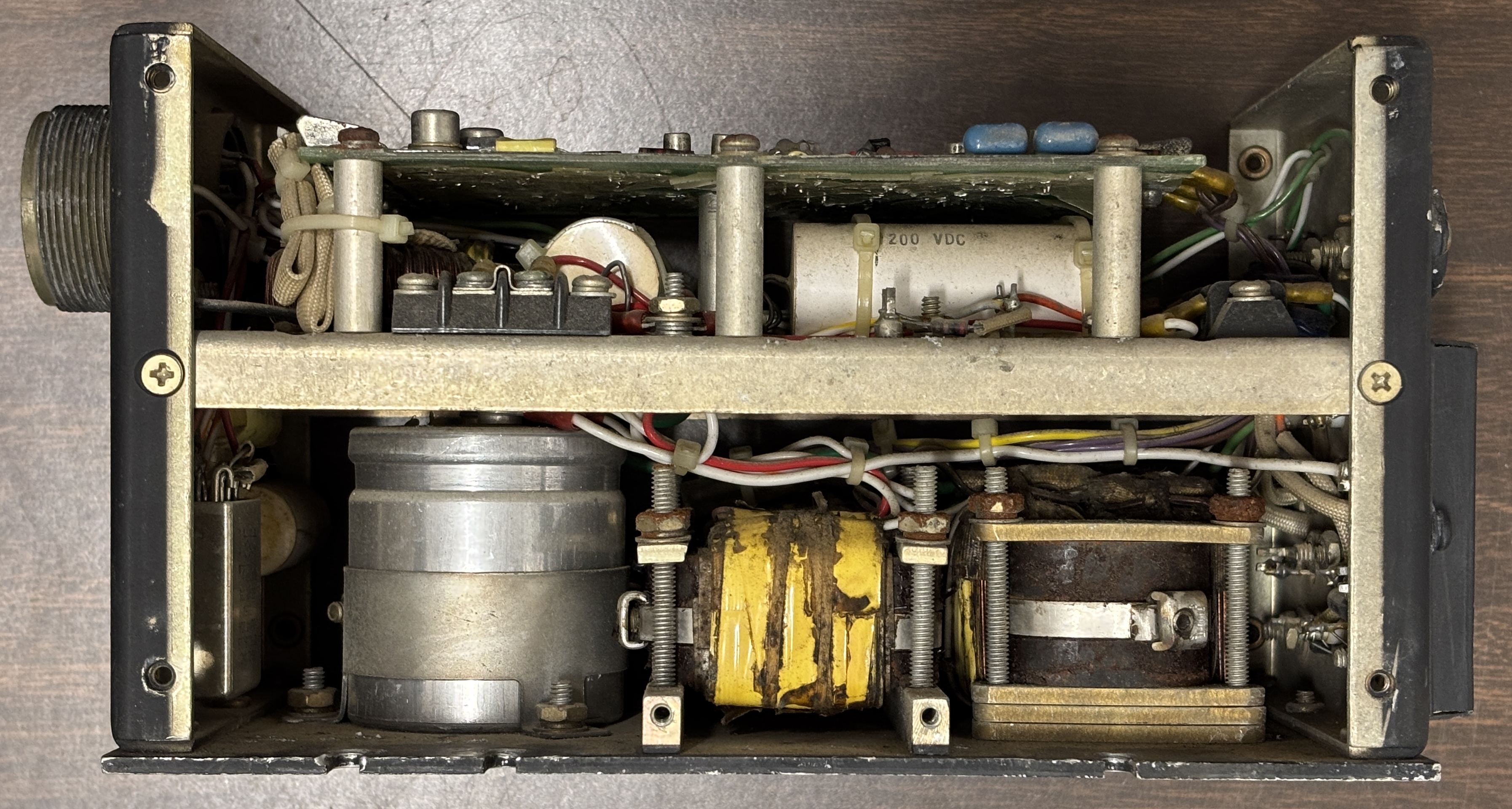
| PIN | DESCRIPTION |
|---|---|
| A | 115 VAC 400 Hz OUTPUT |
| B | AC RETURN |
| C | N/C |
| D | N/C |
| E | DC GROUND |
| F | DC INPUT (26-30 VDC) |
| G | 26 VAC 400 Hz OUTPUT |
| H | N/C |
| J | N/C |
| K | N/C |
| L | N/C |